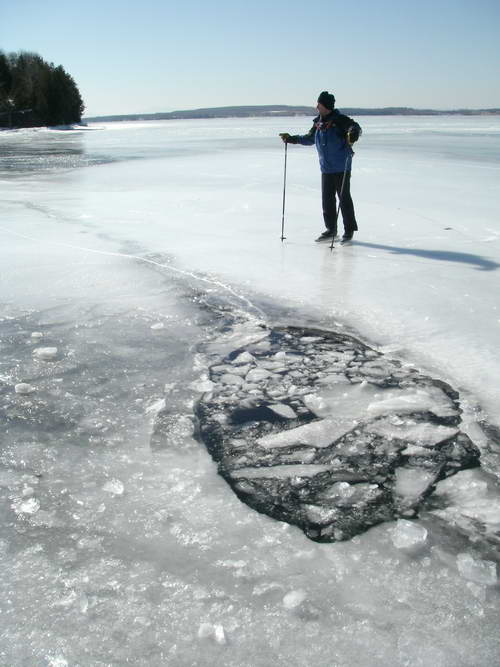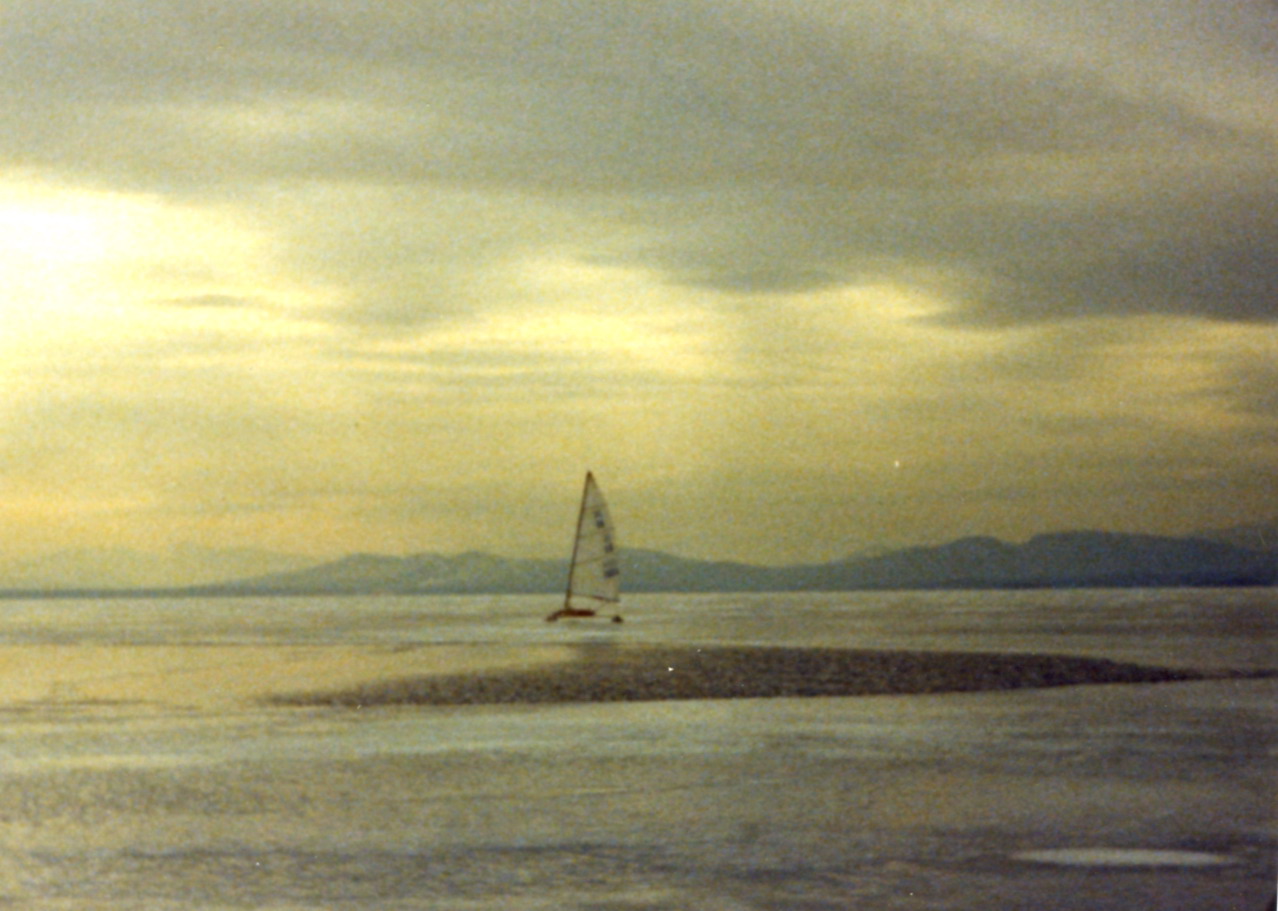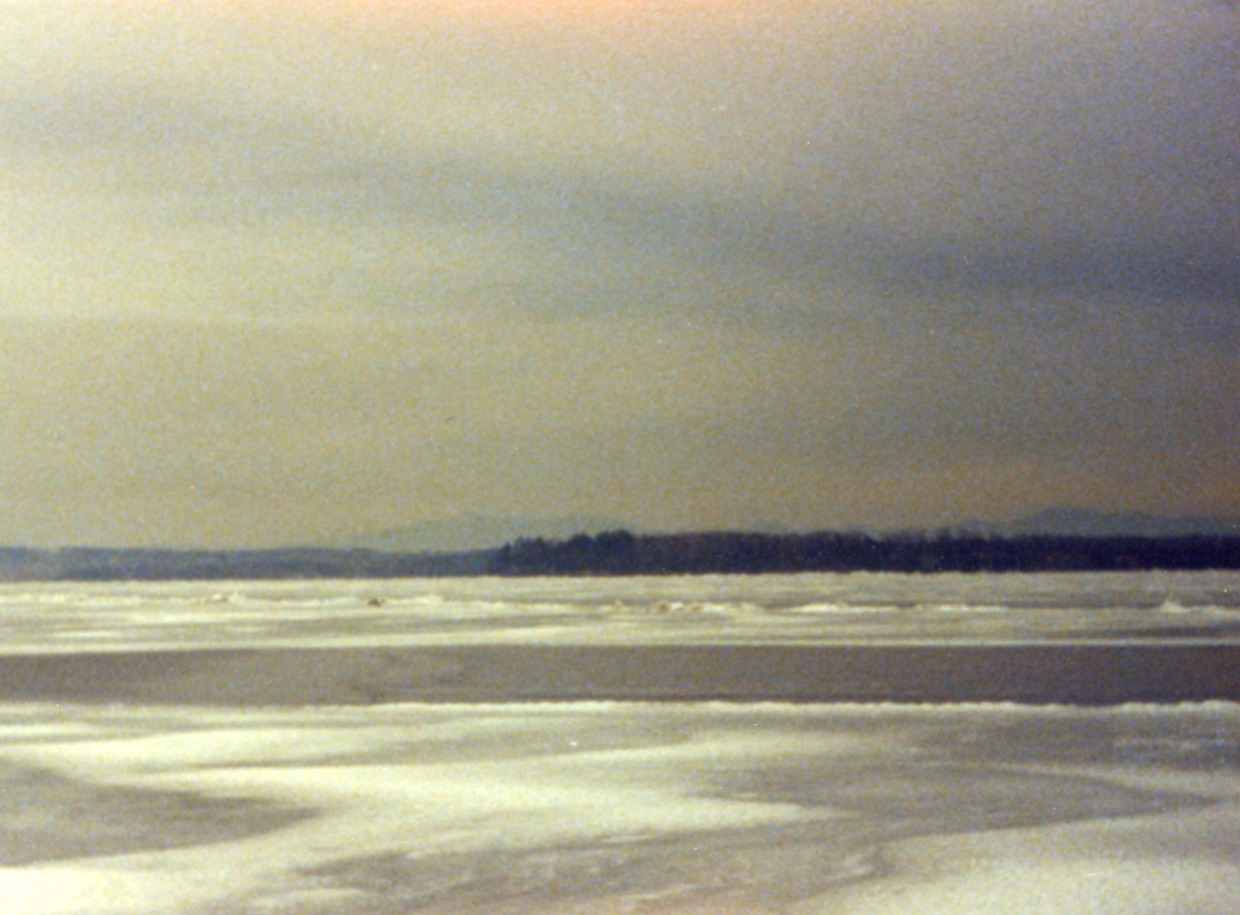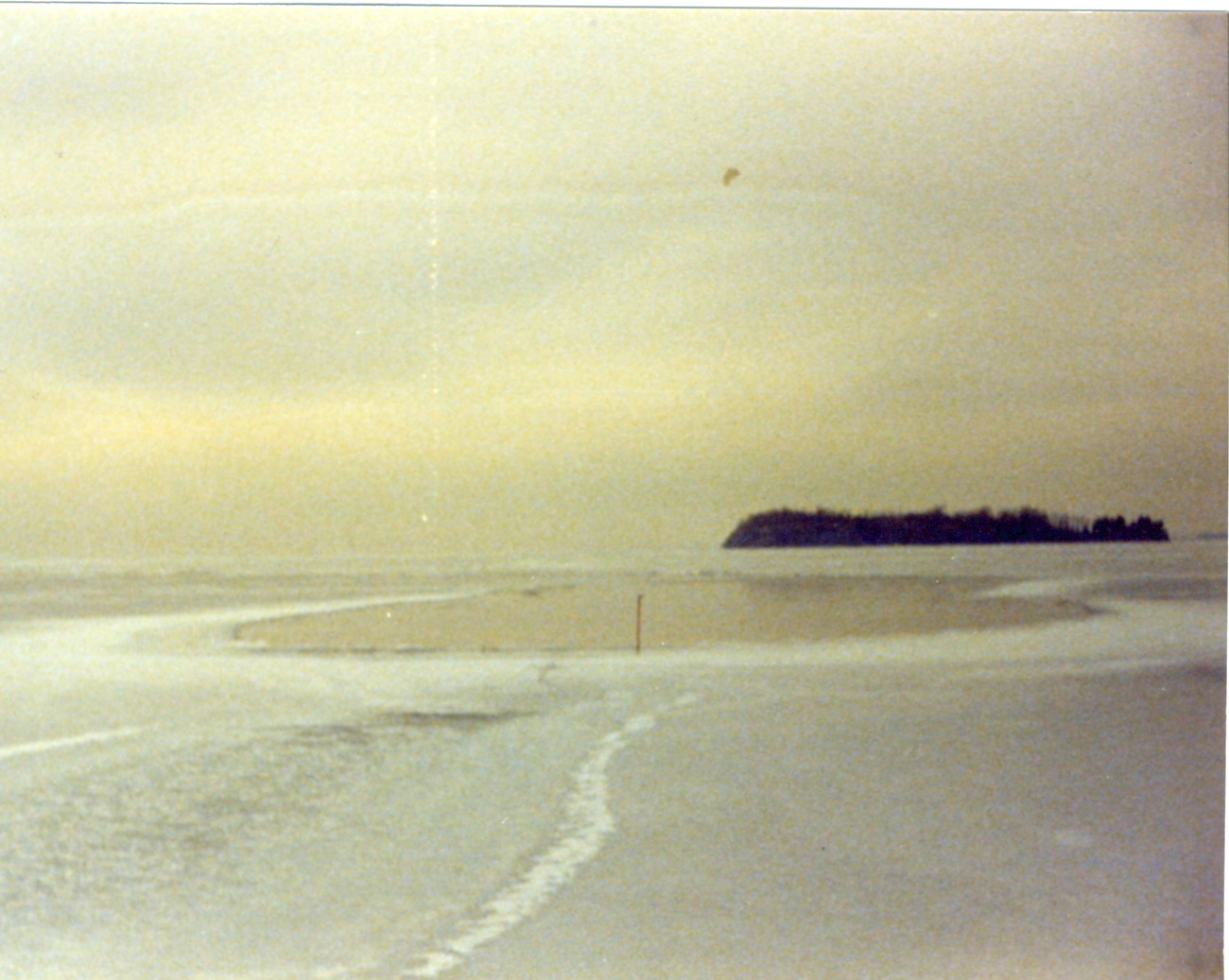 A hole in the thin ice over a reef between shore and the island in the background. The hole was made by a partial breakthrough by a vehicle (truck?).
A hole in the thin ice over a reef between shore and the island in the background. The hole was made by a partial breakthrough by a vehicle (truck?).
Reef Holes
If you look through new black ice you will often see particles moving under the ice at a slow pace (typically a few inches per minute). This is the speed of the underice current at the bottom of the ice sheet. Below the ice there is a one to two foot deep transision layer between ice and the bulk water of the lake. The water right at the bottom of the ice is at 32 degrees and increases over a foor or two to the bulk water temperature (usually from 2 to 4 degrees above freezing) for the rest of the water depth. As the current flows from deep toward shallow reefs the transision layer is easily disturbed allowing the warmer-deeper water into contact with the underside of an ice sheet which can thin or melt a hole in the ice. The amount of thinning of the ice sheet from under ice errosion depends on air temperatures, current speeds, reef dept, ice thickness and snow on the ice.
Reefs are common between islands. Isolated reefs can occur just about any where. The ice on them is typically thinner than the surrounding ice. After a thaw or if the current is strong enough, they may be open water. They are particularly effective at eating vehicles. If there is any open water it will often attract water birds. If you see ducks or geese on the ice, expect water near by.
 The stony bottom of the same hole is about two feet under the ice. The water depth nearby is considerably deeper. The ice over the reef was 2-3" thick and more like 10" over deeper water.
The stony bottom of the same hole is about two feet under the ice. The water depth nearby is considerably deeper. The ice over the reef was 2-3" thick and more like 10" over deeper water.
How much thinning occurs depends on current speeds, air temperature history and water temperatures. As with gas holes, reef holes have an active melting process working on the underside o fthe ice sheet. The ice cover thickness is dependant on the balance between the the cooling effect of cold weather and the strength of the melting process under the ice sheet.



The three pictures above are of Juniper Reef near one of the deepest parts of Lake Champlain. The reef hole was roughly 150 feet by 75 feet. The ice nearby was about a foot thick. We spotted a couple of ducks as we sailed up to it: a sure sign that there was open water. One positive aspect of reef holes and thin ice over reefs is that it can be expected in the same place every year.
Similar to reefs, any place two bodies of water are connected by a narrow waterway there is likely to be thinning of the ice sheet from deeper, warmer water moving through the waterway. This is a lot of the reason why there is usually open water under bridges on causeways. This is especially true if one of the water bodies is not ice covered.
